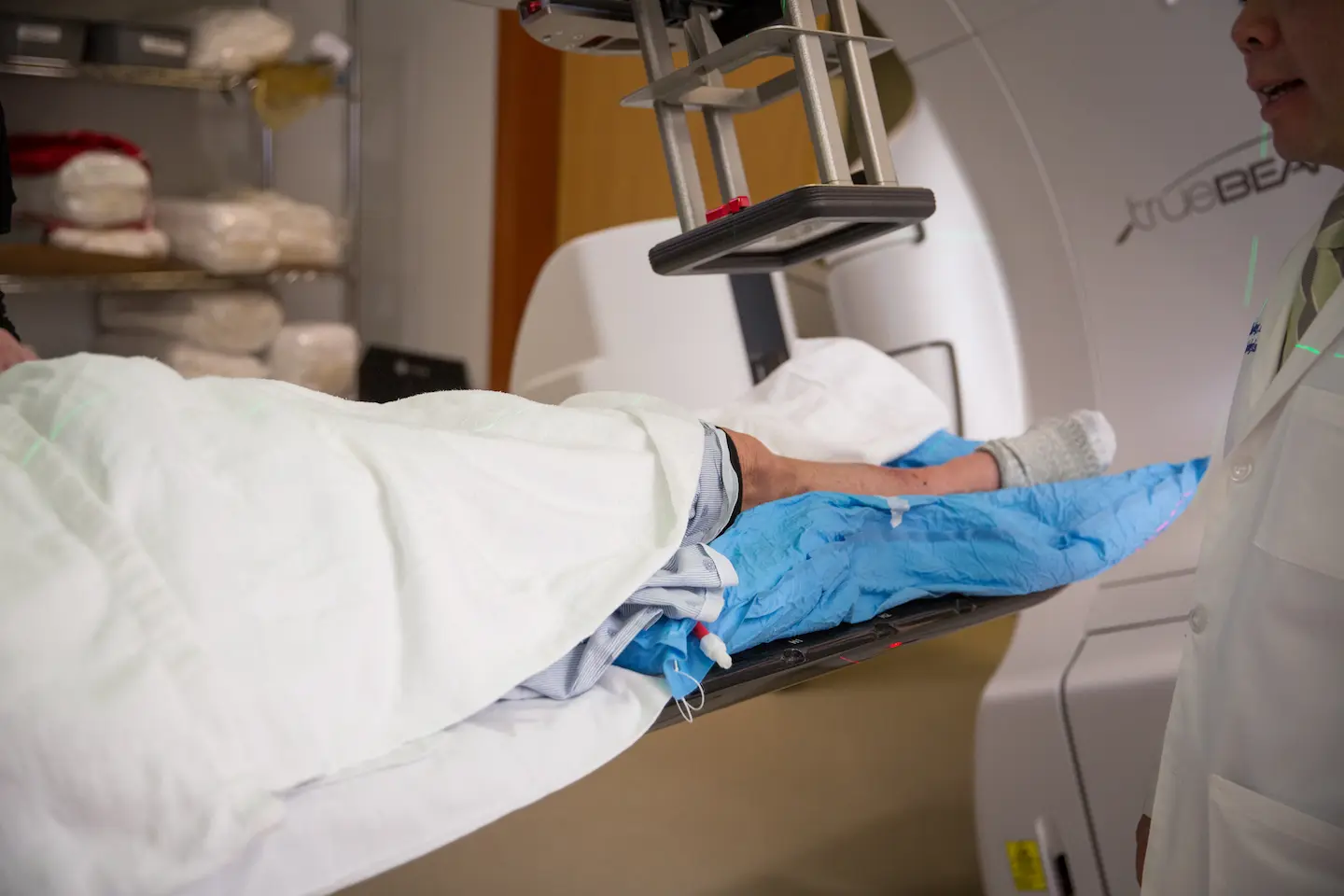
Radiation therapy is an effective way to treat many kinds of cancer in almost any part of the body. Half of all people with cancer are treated with radiation, and the number of cancer patients who have been cured is rising every day. For many patients, radiation is the only kind of treatment needed. Thousands of people are free of cancer after having radiation treatments alone or in combination with surgery, chemotherapy, or biological therapy.
Doctors can use radiation before surgery to shrink a tumor. After surgery, radiation therapy may be used to stop the growth of any cancer cells that remain. Your doctor may choose to use radiation therapy and surgery at the same time. This procedure is known as intraoperative radiation. In some cases, doctors use radiation along with anticancer drugs to destroy the cancer instead of surgery.
Even when curing the cancer is not possible, radiation therapy still can bring relief. Many patients find the quality of their lives improves when radiation therapy is used to shrink tumors and reduce pressure, bleeding, pain, or other symptoms of cancer. This is called palliative care.
Like many other treatments for disease, there are risks for patients who are receiving radiation therapy. The brief high doses of radiation that damage or destroy cancer cells also can hurt normal cells. When this happens, the patient has side effects. The risk of side effects is usually less than the benefit of killing cancer cells.
Your doctor will not advise you to have any treatment unless the benefits – control of disease and relief from symptoms – are greater than the known risks. Although it will be many years before scientists know all of the possible risks of radiation therapy, they now know that it can control cancer.
Radiation therapy can be in either of two forms: external or internal. Some patients have both forms, one after the other.
Most people who receive radiation therapy for cancer have the external type. It is usually given during outpatient visits to a hospital or treatment center. In external therapy, a machine directs the high-energy rays or particles at the cancer and the normal tissue surrounding it.
One type of machine that is used for radiation therapy is called a linear accelerator.
The various machines used for external radiation work in slightly different ways. Some are better for treating cancers near the skin surface; others work best on cancers deeper in the body.
When internal radiation therapy is used, a radioactive substance or source is sealed in small containers such as thin wires or tubes called implants. The implant is placed directly into a tumor or inserted into a body cavity. Sometimes, after a tumor has been removed by surgery, implants are put into the area around the incision to kill any tumor cells that may remain.
Another type of internal radiation therapy uses unsealed radioactive sources. The source is either taken by mouth or is injected into the body. If you have this type of treatment, you will probably need to stay in the hospital for several days.
A doctor who has had special training in using radiation to treat disease – a radiation oncologist – will prescribe the type and amount of treatment that best suits your needs. The radiation oncologist is the person referred to as “your doctor” throughout this booklet.
The radiation oncologist works closely with other doctors involved in your care and also heads a highly-trained healthcare team. Your radiation therapy team may include:
You also may use the services of a dietitian, physical therapist, social worker, and other healthcare professionals.
Treatment of cancer with radiation can be costly. It requires very complex equipment and the services of many healthcare professionals. The exact cost of your radiation therapy will depend on the type and number of treatments you need.
Most health insurance policies, including Part B of Medicare, cover charges for radiation therapy.
In some states, the Medicaid program may help you pay for treatments. You can find out from the office that handles social services in your city or county whether you are eligible for Medicaid and whether your radiation therapy is a covered expense.
If you need financial aid, contact the hospital social service office, the Cancer Information Service, or the local office of the American Cancer Society. They may be able to direct you to sources of help.
This material was taken from the booklet “Radiation Therapy and You” published by the National Institutes of Health.
If you would like to pay your invoice online, please click here to be redirected to our payment portal.
For billing questions or to make a payment over the phone, call the patient accounts department during regular business hours. 253-779-6325.
We are happy to help answer any billing or statement question you have.
If you are interested in learning more about Tacoma Radiation Oncology Center or would simply like more information about our services, contact us and a member of our team will respond accordingly.
At Tacoma Valley Radiation Oncology Centers we’re passionate about our patients. Our caring and highly trained team will treat you like family while providing you with the most advanced treatment planning and sophisticated, cutting-edge radiation therapies with the highest level of quality and personalized care.
